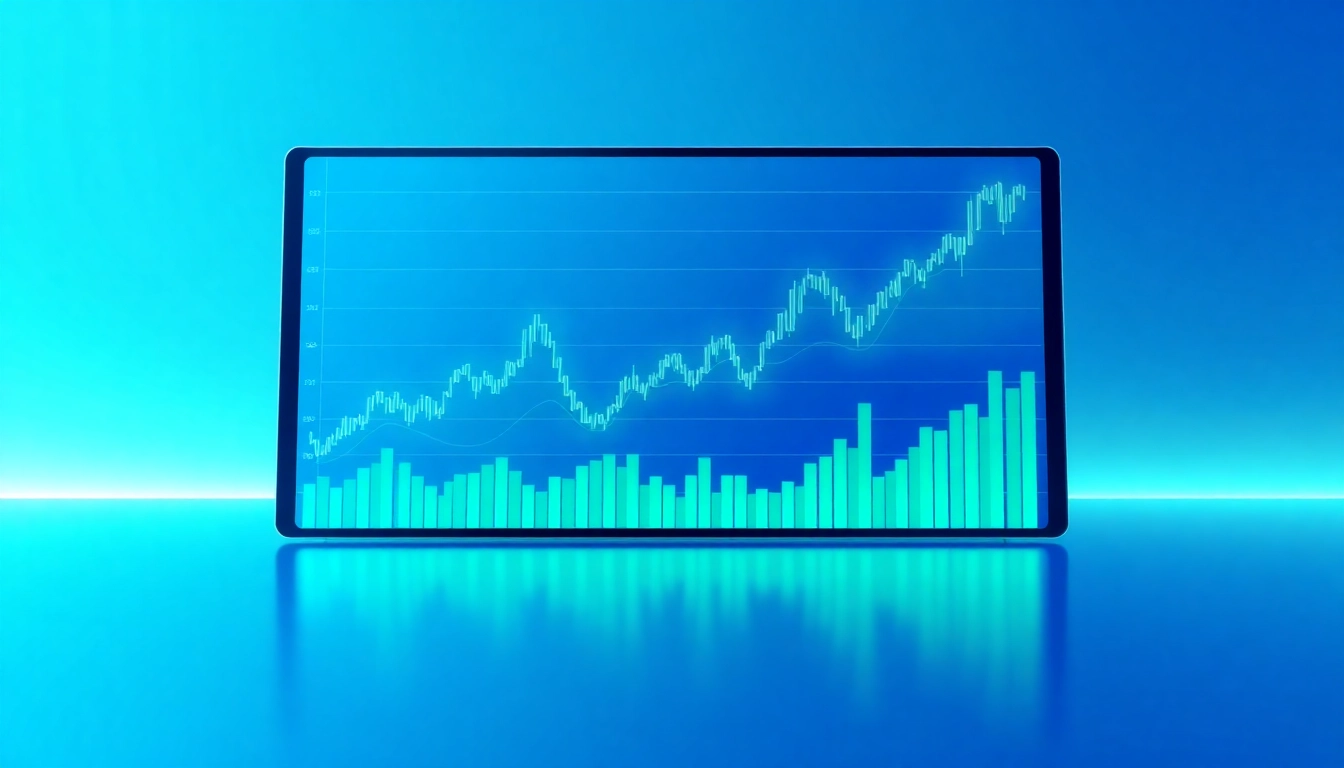Understanding the Basics of Trading View
In the fast-evolving world of financial markets, having a reliable and versatile charting platform is essential for traders and investors. trading view has emerged as a leading solution, offering comprehensive tools for analyzing market data, sharing insights, and executing trades. Its user-friendly interface combined with powerful features makes it suitable for both beginners and seasoned professionals. To fully harness its capabilities, it’s important to understand what Trading View is and how it functions, laying the foundation for more advanced strategies.
What is Trading View and How It Works
Trading View is a cloud-based financial charting and analysis platform that combines real-time data from global markets with social networking features. It functions as a hybrid platform, integrating technical analysis tools, fundamental market data, and social collaboration, making it an all-in-one hub for traders and investors. Users can access a wide variety of asset classes, including stocks, cryptocurrencies, forex, commodities, and bonds, all within a unified interface. The platform operates via web browsers and mobile apps, ensuring accessibility across devices.
At its core, Trading View aggregates live market data from multiple sources, allowing users to create detailed charts, apply technical indicators, and develop custom analysis. Its real-time alert system keeps traders updated on market movements, enabling swift decision-making. The platform also has built-in social features, such as idea sharing and discussion forums, that foster community learning and collaborative trading.
Key Features and Tools for Beginners
For newcomers, Trading View offers an intuitive interface with features designed to simplify market analysis:
- Customizable Charts: Easy drag-and-drop tools allow users to select chart types (candlestick, line, bar) and timeframes.
- Technical Indicators: A vast library of built-in indicators, such as RSI, MACD, Bollinger Bands, and Moving Averages, helps identify market trends and signals.
- Watchlists and Alerts: Users can create watchlists for favorite assets and set custom alerts based on price levels or indicator conditions.
- Community Ideas: Access to shared trading ideas from other users adds educational value and practical insights.
- Educational Resources: Tutorials, webinars, and articles assist beginners in developing trading skills.
Setting Up Your Trading View Account Effectively
Success begins with a well-structured account setup. Sign up for a free account and customize your workspace by creating dedicated tabs for different asset classes. Link your trading account for integrated trading tools, and configure notification preferences to receive alerts on critical market movements. Explore the platform’s settings to enable auto-saving of layouts and establish a disciplined routine for analysis, ensuring consistency and accuracy in your trading approach.
Advanced Trading View Strategies for Investors
Customizing Charts and Indicators for Better Analysis
Advanced traders leverage Trading View’s customization capabilities to refine their analysis. Creating custom indicators or combining multiple indicators into a single overlay helps identify nuanced market signals. For example, a trader might combine Fibonacci retracements with volume profile indicators to pinpoint reversal zones with higher confidence. Trading View supports scripting via Pine Script, enabling users to develop proprietary indicators and automated strategies tailored to specific trading styles.
Utilizing Trading View for Technical and Fundamental Analysis
While technical analysis focuses on chart patterns, trendlines, and indicators, fundamental analysis involves evaluating economic data, earnings reports, and macroeconomic indicators. Trading View facilitates both approaches by providing access to financial statements, economic calendars, and news feeds. Combining these analyses can lead to more balanced trading decisions. For example, a trader might use technical signals to time entries but rely on fundamental data to confirm long-term prospects.
Creating Alerts and Automated Trading Signals
Alerts are vital for staying proactive in volatile markets. Trading View allows setting precise notifications for price thresholds, indicator crossovers, or pattern formations. These alerts can be communicated via email, SMS, or in-app notifications, ensuring traders react promptly. For more advanced automation, integrating Trading View with external trading bots or brokers using APIs enables automatic execution of strategies based on predefined criteria, reducing emotional biases and enhancing efficiency.
Integrating Trading View into Your Trading Workflow
Connecting Trading View with Brokerage Accounts
Seamless integration with brokerage platforms supports quick execution and streamlined management. Many brokers offer direct compatibility with Trading View, allowing traders to place orders without switching applications. Establishing such links involves authenticating accounts and configuring permissions within Trading View’s trading panel. This integration minimizes delays and enhances accuracy, especially during fast-moving markets.
Collaborating in Trading Communities and Sharing Ideas
One of Trading View’s standout features is its vibrant community where users share insights, analysis, and forecasts. Participating actively by posting your own ideas, commenting on others’ strategies, and engaging in discussions broadens your market understanding. This social aspect fosters continuous learning and can lead to discovering new trading techniques or confirming your analysis through collective consensus.
Analyzing Market Trends with Trading View Social Features
Monitoring community ideas and real-time chat groups helps identify emerging trends early. Integrating these insights with your technical analysis improves decision accuracy. For example, a surge of bullish ideas or positive market sentiment in social feeds might reinforce your technical signals, providing stronger confirmation before executing trades.
Optimizing Performance and Security on Trading View
Best Practices for Data Security and Account Safety
Protecting sensitive data and trading accounts is paramount. Use strong, unique passwords and enable two-factor authentication. Regularly review connected apps and permissions, and avoid sharing login details. Trading View also recommends keeping your browser and app software updated to patch security vulnerabilities.
Enhancing Speed and Responsiveness of Trading Charts
To improve the performance, minimize the number of open charts and disable unnecessary indicators. Use lightweight hardware and ensure a fast internet connection. Adjust refresh rates and cache options within the platform settings to reduce lag, particularly when analyzing multiple assets simultaneously or during high-volatility periods.
Keeping Your Trading View Tools Updated for Accuracy
Regularly update your Pine Script indicators, watchlists, and saved layouts. Subscribe to platform updates and attend webinars or tutorials offered by Trading View to stay current with new features, ensuring your analysis tools are accurate and efficient.
Measuring Success and Improving Your Trading View Use
Tracking Trading Performance through Analytics
Trading View provides detailed performance reports, including trade history, win/loss ratios, and risk metrics. Analyzing these helps identify effective strategies and areas for improvement. Maintaining a trading journal integrated with Trading View’s charts further enhances disciplined evaluation.
Learning from Community Ideas and Shared Strategies
Regularly reviewing popular ideas and community comments provides insights into market sentiment and emerging patterns. Implement a routine to analyze successful strategies shared within the community, adapting relevant tactics to your trading plan.
Adapting Your Approach Based on Market Changes
Flexibility is key. Use Trading View’s real-time analysis to adjust your strategies as market conditions evolve. Keep monitoring news feeds, economic data releases, and social sentiments to stay ahead of potential shifts. Continuous learning and adaptation ensure sustained trading success.



